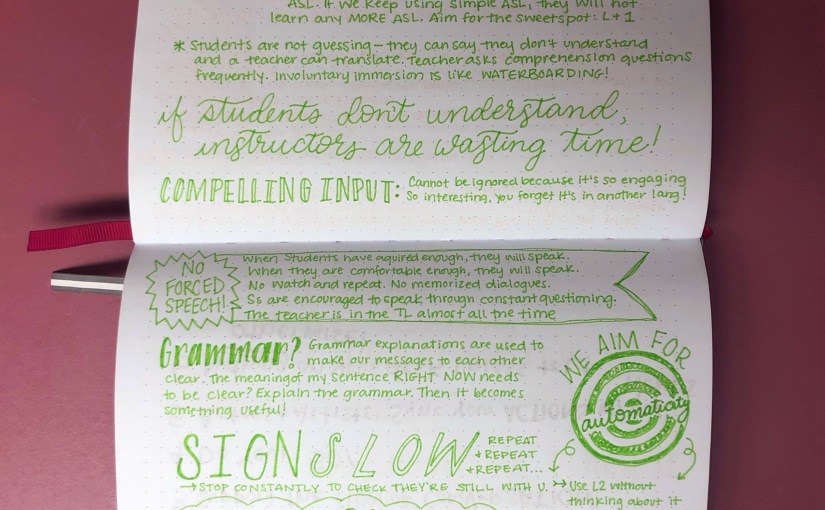Hi everyone. It’s been a minute since my last post.
About a year and a half, but yeah… a minute. And I’m sure you can’t at all guess the reason why…
So let’s catch up! Since my last post in March 2019, I have switched school districts, adopted a dog, gotten married, moved into a house, finished my sixth year teaching, and now I am preparing to teach ASL 3 for the first time. And dreading it.
After the absolute hell that was all of 2020 and the 20-21 school year, I should be more thankful than ever for summer and enjoying time to myself to relax, but unfortunately that’s not happening for me. I’m finishing my Masters of Library and Information Sciences program, preparing for what we’re calling “Wedding 2.0” (aka our wedding reception we had to postpone from last summer until now), figuring out how to go on our honeymoon (with a passport that still hasn’t arrived and might not arrive in time for us to leave), and on top of it all, processing how to teach a class I have no idea how to teach.
In my school, world languages are electives, but most students take them in order to get into college, which, as I’m sure you all know, mostly require either three years of one language or two years of two languages. A lot of my students switched to ASL from Spanish or French or Chinese, so many students only needed two years of ASL and are done. But there are also several who want to take ASL 3, and I have broken those students into two categories: those who need a third language credit and those who love being in my class.
I’m not worried at all about those who love being in my class. I could stand at the front of the room and do the chicken dance all period and they would be thrilled. But for the ones who need a third language credit (and, let’s be honest, the other group too), I need to come up with something exciting! Something intriguing! Something that will make them go, “Ah, I knew I took this class for a reason!” So I’m sitting here, literally 50 days before the first day of school, going Think, Jenna, think! and stressing myself out about the school year before it’s even reasonable to think about it.
Probably the biggest benefit of teaching ASL 3 is that there’s no ASL 4. I can teach literally anything I want, and I don’t have to worry about who will teach them next year or what I have to save for later. Unfortunately for me, I’m about the world’s worst decision maker, so when there’s an unlimited amount of things I could teach… where do I begin? What do they “need to know”? What do they WANT to know? It’s very hard to plan such things 50 days before the school year starts.
Therefore, I’ve decided to go back to my roots. Full C.I. it is. I’m going to focus on conversations, authentic experiences, and real-world knowledge and topics. I found a couple posts about what people wish they had left high school knowing, and what I realized was that I could help my students learn these very valuable lessons through the medium of ASL! That’s what Comprehensible Input is all about, and I’m ready to get back into that world.
So join me (again) as we venture through the World of C.I. and pretend like the majority of 2020 and 2021 didn’t happen at all. Throughout the summer, I’ll try to post some of my ideas about ASL 1, 2, & 3 as they come to me, then once the school year hits, I’m hoping to post more to my YouTube channel again.
Hope to talk to you guys again soon!
xoxo
Jenna



 Need an activity to fill a whole class period? Want to get some grammar practice in? Dicteé is for you, my friend.
Need an activity to fill a whole class period? Want to get some grammar practice in? Dicteé is for you, my friend. Tina being awesome and teaching everyone cool stuff about France.
Tina being awesome and teaching everyone cool stuff about France.


